If you cannot view this newsletter correctly, click here to view it online

Editorial - July 2014

I'm currently sat in Amsterdam writing this editorial. As with all places I visit, I like to know something about the place. Aside from being in my ancestry, I now know that there are two bikes for every person in this city. Being from one of the hilliest parts of the UK and a bike enthusiast this makes me quite envious! I've also discovered that the Netherlands are responsible for 75% of the world's flower bulb production, and 70% of the world's bacon (not Denmark as many Europeans think). Finally, I've discovered that the Dutch are the world's tallest population at an avergae of 184 centimetres for men.
Statistics can be interesting, and also extremely useful when used in the correct way. Many groan at the sight of them, and others cherry-pick the ones that favour their aims. However, it's worth looking at how they can improve your games and ultimately, your downloads and sales. Building mechanisms for feedback into your games early can generate a profile that finds strengths and weaknesses, and give you the opportunity to take advantage or take remedial action.
This month we have some great feedback on feedback. Sean Mann takes you into the detail behind monitoring your games. We have a new improved game from a recent competition that is now in the stores thanks to the feedback of the judges and community. As always we have news from FPSC Reloaded and AGK which live in a cycle of feedback and improvements, plus a whole lot more.
Until next time,

contents
(1) FPSCR Competition (2) FPSC News (3) FPSCR Store (4) Sound Reloaded (6) AGK Development (7) Bezier Curves (8) Worm Game (9) Tools (10) Tutorial - Data (11) TGC Channel (12) Social Feeds
FPSC Reloaded - Competition Round 1 Results

Win your Share of:
$750 Cash prizes!
$750 of Graphics cards!
33,000 Store points!
Everyone's a winner!
The top ten entries already know they have won a minimum of $50 in prize money and 2,000 store points. We will find on July 21st who has claimed the three major prizes!
Here are the top ten winners in no particular order;
Rescue the Princess - tomjscott
The Asylum – Unfamilla
Locked and Reloaded – Kravenwolf
Follow the Line – Sparrowhawk
Terrorist Territory - Volga
The island – Defy
Morning Mountain Stroll – WizardOfId
Commando – Dvader
Book of Souls – Rolfy
Past Life Regression – morphtactic
The Rules
1st Prize
- GeForce 660 graphics card (value estimated @ $250)
- $200 Dollars in prize money
- 10,000 FPS Creator Reloaded store points
2nd Prize
- GeForce 660 graphics card (value estimated @ $250)
- $100 Dollars in prize money
- 5,000 FPS Creator Reloaded store points
3rd Prize
- GeForce 660 graphics card (value estimated @ $250)
- $100 Dollars in prize money
- 4,000 FPS Creator Reloaded store points
4th to 10th placed winners each receive
- $50 in prize money
- 2,000 store points
FPSC Reloaded Blog
By Lee Bamber
Each month we'll update you on the progress of FPS Creator Reloaded. You will find a running commentary on the development through the FPSC-R Blog, but right here you will find some of the selected highlights that deserve your utmost attention. You can also follow the development on the official Facebook page. Within the R&D offices here at TGC, Reloaded is our main focus and we aim to constantly develop it to make it into a world class game creation tool. With great support from people who have made pledges to the project we are able to evolve and build our best game maker ever!
Lee Bamber, FPS Creator Reloaded Developer summarises the June achievements for himself and the FPSCR development team.
Lee BamberOne issue is that the current models have 'scaled origin matrices' which are ignored during the ragdoll manipulation. This results in head bones expanding and re-creating the teeth ten times larger, funny but undesirable
In a month when the latest build 1.071 was released and the performance improvements were well received, we made big leaps forward in many areas. Here is a quick rundown of the updates:
Rendering engine
- Our engine now deals with small objects so that they only faded in and are drawn when the player gets near to them
- We've added a low shader technique with customisable slider to improve performance on lower spec PCs.
- We've improved frustrum culling (especially for custom media)
- We have reviewed our game engine with NVidia's NSight optimisation tool
- We fixed the water fogging issue
- High, medium and low shaders now create similar colour balances
- We explored batch rendering but this proved to not help frame rate
Occlusion system
- We've added an occlusion cache to speed up the occluder process
Collision
- Small items like bricks are not classed as obstacles to enemies. So now they will walk over them.
Grass system
- We've optimised the drawing of the grass
- Painting grass on the edges of the map no longer causes issues
- The bright green colour has been removed when editing grass
Water
- Reflection shader optimised. Small items are now not reflected.
- Water can be hidden fully by setting its slider to zero.
Terrain
- Desert terrain is now as fast as lush and ice.
AI
- Improved AI performance resulting in a faster FPS for your games
- Stopped enemies from walking through walls
- Sniping enemies will see them fall and die properly
- Cover point marker added to help you create intelligent choices for the enemies in your levels
- Fixed an issue with waypoints that stopped them from being removed
- HURTPLAYER command added
Level Loading
- Sped up slow game loading areas (AI Obstacle, vegetation preparation)
- Improved memory use when many trees used in a level
- Updated trees from the model packs. Tree collision is now much better. Users must re-download these updates.
Player
- Gun position and rotation of player remembered when player spawns a new life
- If player dies, their weapon no longer keeps shooting
Other updates
- Multiple ammo pickup sounds play better
- Improved loading of more complex .x files
- Fixed smoothkeys ini setting
- 2 Compounds Demo Game, added more objects & fine tuned the level design
Ragdoll - Coming Soon!
One issue is that the current models have 'scaled origin matrices' which are ignored during the ragdoll manipulation. This results in head bones expanding and re-creating the teeth ten times larger, funny but undesirable.
Keep watching the blog for further updates on this aspect, which is nearing completion as this newsletter goes to press.
Menu of the Day
Hearing Voices
We now have some enemy voices in the engine which means when the enemies see you they yell out. It's pretty cool at first, but as Ravey (Dave) comments, it can get a bit repetitive and annoying, so there is definitely a subtle art when to trigger these audio incidents and we'll be working to ensure it's more natural.
Art Break
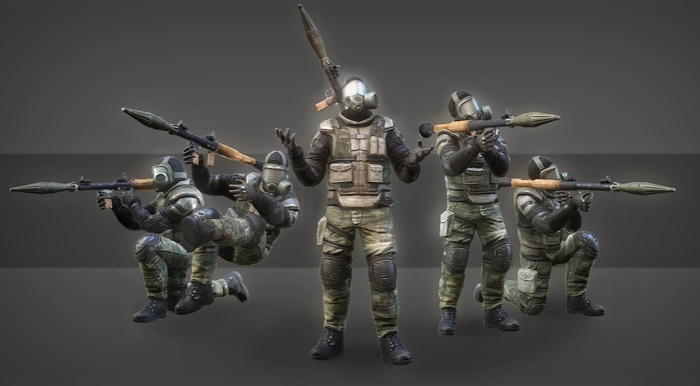
A Whole Host of Tweaks
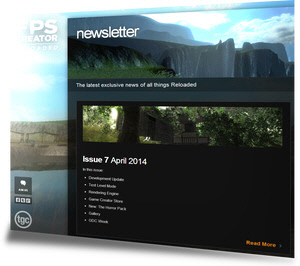 The whole team have created a reasonable collection of improvements and new features across the board. Many bugs have been quoshed, enemies behave better, Zombies do what Zombies should, audio is making huge waves, and a whole lot more.
The whole team have created a reasonable collection of improvements and new features across the board. Many bugs have been quoshed, enemies behave better, Zombies do what Zombies should, audio is making huge waves, and a whole lot more.
The Intel Q&A
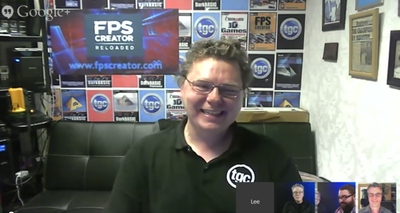
If you didn't hangout with Lee Bamber and Intel live last month, there is still the opportunity to watch the interview again. Get an insight into Lee's origins, his coding mindset, Lego Mindstorms claim to fame and more. Click here to watch the video.
Reloaded Discount Deal
Pledge Now to support FPSC Reloaded development
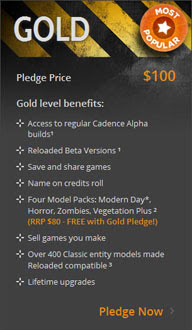
Crowd funding provides a way for Indie Developers like The Games Creators to pre-fund their projects. It's also a thumbs up from customers to show the developers the market wants and needs their new idea.
By pledging you are helping The Games Creators to build the most exciting and revolutionary game creator. With your pledging support you can strengthen our team as we build this amazing technology. You are essentially becoming part of our family as you share in it's development and ultimate production.
All pledge levels grant the backer access to all betas, with other bonuses, including free model packs valued at between $18 and $39 for Gold and Silver pledge levels.
So, if you'd like to help fund Reloaded development and join us on our journey, please support us with a pledge. The most popular and best value deal is the Gold level pledge, but you can find details of all pledge levels here.
The Store - Relaunched for Reloaded
First Downloadable Weapon...Free!
Calling all Artists

- Sign up to become a store seller
- Follow the easy to use guides on how to prepare your assets
- Upload your assets for approval
- Once approved TGC will publish your assets live onto the store
Sound Reloaded
The audio system of FPS Creator Reloaded has had a major overhaul. It is now possible to do so much more with background music and ambience using smarter trigger zones and audio switching modes. Watch this video for the full story.
AGK V2 Developments
The Beta Compiler has Arrived
June saw all of the existing language features completed. We have found existing projects run through the new Compiler are showing very promising results. The compiler is about 40 times faster than before and the interpreter appears marginally faster.
Sean MannMy Project used to be a 35MB bytecode file. It is now 3.5MB. That's an astonishing reduction. Also it used to compile in 3:45 minutes and now it compiles before I can blink
There are some additional language features that the new interpreter supports:
- Array.sort() to sort array elements in ascending order
- array.insertsorted(expr) to insert an expression into a sorted array
- array.find(expr) to return the array index that equals the expr in a sorted array
- array.reverse() to reverse all the elements in an array
- Arrays of types can use the above sort/insertsorted/find functions, they will be compared based on the value of the first variable in the type
- Make sure to backup AGKCompiler.exe and interpreters/Windows.exe first so you can reverse the changes.
- Extract the zip file to the AGK/IDE/Compiler folder to test the new version, then compile and run as normal.
- This build is for Windows only and does not support broadcasting.
There's a blog in the forums should you want to follow the development progress.
Progressing the IDE
We are looking at changing the IDE in a number of ways, and to faciiitate this it is very likely that we will swith to Geany. First and foremost this will enable development on Mac OS X as well as windows, which is welcome news for devlopers focused on Apple products. It also provdes a framework for many other desirable features.
What is Geany?
Geany is a small and lightweight Integrated Development Environment. It was developed to provide a small and fast IDE, which has only a few dependencies from other packages. Another goal was to be as independent as possible from a special Desktop Environment like KDE or GNOME - Geany only requires the GTK2 runtime libraries.
Some basic features of Geany:
- Syntax highlighting
- Code folding
- Symbol name auto-completion
- Construct completion/snippets
- Call tips
- Many supported filetypes including C, Java, PHP, HTML, Python, Perl, Pascal
- Symbol lists
- Code navigation
- Build system to compile and execute your code
- Simple project management
- Plugin interface
- Geany is known to run under Linux, FreeBSD, NetBSD, OpenBSD, MacOS X, AIX v5.3, Solaris Express and Windows. More generally, it should run on every platform, which is supported by the GTK libraries.
Smooth Operations
Clonkex has released, refined and re-released his library of Bezier curve functions for AGK, Tier 1 and Tier 2. They could easily be converted for DarkBASIC Professional, and also into LUA for FPSC Reloaded users.
 Fast bezier curve calculation
Fast bezier curve calculation- Open and closed curves
- Easily find closest point on curve
- Can divide curve into arbitrary number of segments for line drawing
- Floating point precision for sub-pixel alignment
- Both Tier 1 and Tier 2 support
Why would I want a Bezier curve?
Beziers are a fantastic way to draw smooth curves to represent many different elements in a game. No matter how complex they become, you can pinpoint any part of the curve using the original parameters.
Race tracks: Build a race track, and place the track polygons along the curve. Trace the car route along the track using the bezier parameters.
Flight Paths: Create swooping flight paths for planes, birds and spacecraft. Beziers can be represented in 3D space as well as 2D.
Hills and scenery: Use Beziers to create natural looking but predictable scenes, and quickly calculate any point on the scene.
Handwriting smoothing: Trace waypoints as a user signs their name, and join the dots with Bezier curves. Save the signature as waypoints to minimise data and retrace at any time later.
These are just a few of the uses, you'll find may more as you experiment. The latest download of the library will be found on this forum thread.
The Worm Game
One of the games entered in last month's competition was The Worm Game by Matty H. Many of you may know Matty from his numerous wins in the Intel competitions such as the highly successful Mystic Blocks. After the recent TGC competition, Matty took on board the feedback, made some changes, and released his game to the App Store. Here's a quick reminder of his entry:
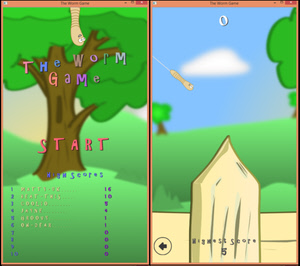
The Worm Game
by Matty H
This game stands out for it's well presented, crisp graphics. The gameplay can be summed up as the rope mechanics in the Worms franchise, but with less time to think about your next swing.
With a little more playtesting to perfect the firing of the silk rope this will be a fun and addictive game. It should also increase in difficulty a little more to keep the player hooked.
The next Steps
by Matty H

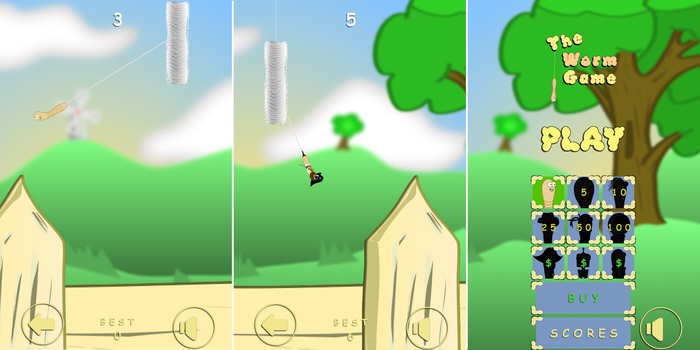
Stuck between a Rock and a Hard Place
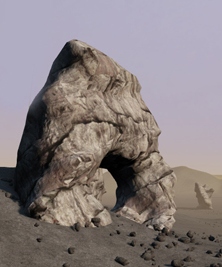
Recently released is Medusa Pro, a rock model creator for windows that can generate X and DBO models for Dark Basic and FPS. It is mysteriously difficult to generate realistic rocks...they so often look like blobs even in big budget games. Medusa can turn any shape into a realistic looking rock model and has a wealth of functions including bevel, crack and fold as well as per vertex editing to allow you to generate models for your application that suit your needs. Medusa automatically generates LODs and collision meshes and each model imports seamlessly. Medusa even features a batch creator allowing numerous randomised models to be created at one time. Medusa generates rocks based on real geological principles.
Bonus for TGC Customers!
Anyone buying Medusa Pro in July and August 2014 will be given access to an additional Rock Pack containing 2 additional templates, capable of generating a huge range of rock formations. You also have the option to sell your creations in the TGC Store under the generous license, simply by providing your own textures. So if you have been procrastinating over this purchase, now is the time to come out from under your rock and buy it!
Full details, purchasing options and the free Medusa Lite can be found here.
AGK Tutorial - App Data

with Sean Mann
App usage analytics and a postmortem of Shape Time

How did we get all of this data and what data did we track?
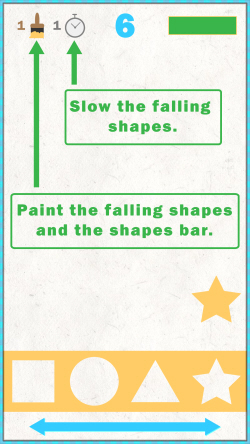
Beyond challenging, but rewarding, gameplay



About Shape Time
Four shapes. Four colors. How many can you catch?
Shape Time! is a deceptively simple, fun, and addictive game. Just catch the falling shapes with the shapes bar by matching the shape and color. Use the paintbrush power-up to paint all the shapes the same color. Use the clock power-up to slow down the falling shapes. It looks easy… but is it?
Challenge your focus, reaction time, and hand-eye coordination with Shape Time! Earn a Bronze, Silver, or Gold Badge with your hi score. Brag about your Badge on Facebook and add yourself to the Leaderboard to see how you stack up against players from around the world.
- Bronze Badge: 75-124 points
- Silver Badge: 125-174 points
- Gold Badge: 175+ points
Shape Time! is FREE to play. You can purchase power-ups, more lives, and infinite lives with ads removed. New version coming soon with less restrictions and a whole lot more fun! Available on Google Play and the App Store.
The TGC YouTube Channel
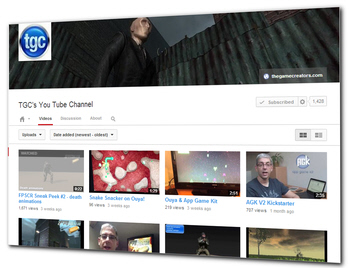 Have you visited the TGC YouTube Channel yet? You may be surprised:
Have you visited the TGC YouTube Channel yet? You may be surprised:
- Over 130 videos!
- Over 750,000 views!
- Over 2,200 subscribers!
![]() Take a look at our channel now, and make sure you hit the subscribe button to stay up to date with new video uploads. Very often you'll get advanced previews of upcoming news.
Take a look at our channel now, and make sure you hit the subscribe button to stay up to date with new video uploads. Very often you'll get advanced previews of upcoming news.
Keep up to date with TGC on Facebook & Google+
![]() Join over 6,300 fans on TGC's Facebook page to keep bang up to date on news, user projects from the forums and discussions.
Join over 6,300 fans on TGC's Facebook page to keep bang up to date on news, user projects from the forums and discussions.
We're keen to hear from all our avid users and we always love to hear what you've been up to with the tools we sell. So if you have something you want to share with the wider TGC audience why not post it into the TGC Facebook page?
FPSC Reloaded
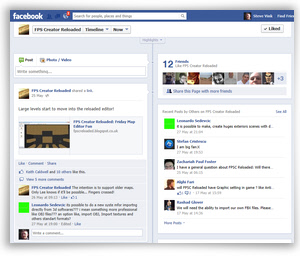 There are now over 2,500 fans discussing Reloaded on our Facebook page right now. That's over 500 more than last month! Whether you simply want to see the update and progress news as it is released, or get involved in technical discussions about LOD, Light and lots of other topics, sign up to this page today to be part of it.
There are now over 2,500 fans discussing Reloaded on our Facebook page right now. That's over 500 more than last month! Whether you simply want to see the update and progress news as it is released, or get involved in technical discussions about LOD, Light and lots of other topics, sign up to this page today to be part of it.
App Game Kit
You can join in the Facebook discussions in our AGK group page with over 580 members and we have a new AGK Facebook page.
Google+
You can also follow our products on Google+
"There are three kinds of lies: lies, damned lies, and statistics."
Benjamin Disraeli










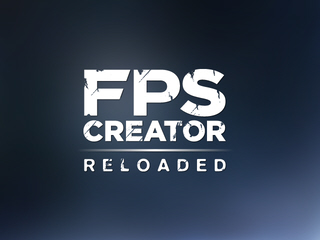
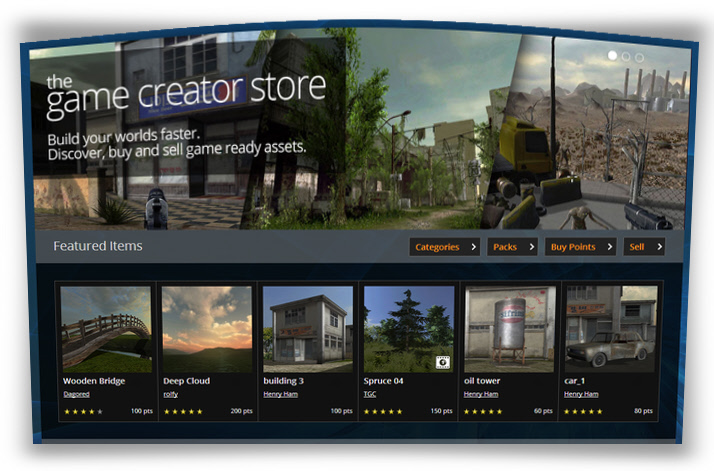
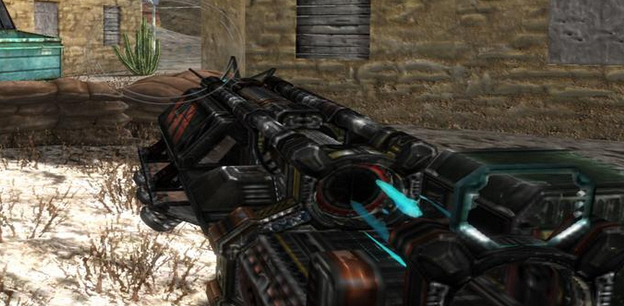
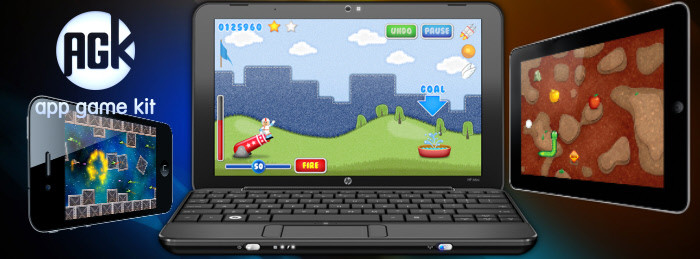
 Fast bezier curve calculation
Fast bezier curve calculation